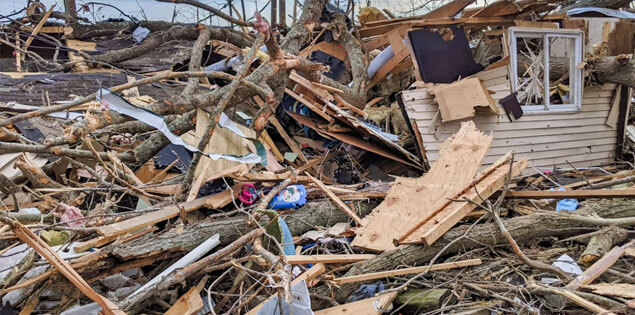The impact of climate-related natural disasters has reached alarming levels, with a fivefold increase in such events over the past 50 years. Between 2000 and 2019 alone, these disasters claimed 1.23 million lives, affected 4.03 billion people, and caused economic losses amounting to US $2.97 trillion globally. In just the past year, over 12,000 deaths were reported due to floods, wildfires, cyclones, storms, and landslides — a 30% rise compared to 2022. Developing nations are bearing the brunt of these disasters, experiencing a staggering fifteenfold higher number of victims compared to developed countries. This growing disparity underscores the urgent need for global action to mitigate climate risks and build resilience.
In this context, resilient infrastructure, which can withstand these disasters, is vital to reduce the loss of lives along with the adverse economic impact. This is reflected in the escalation of the global demand for sustainable infrastructure, with an estimated annual investment of US $6.9 trillion required to meet climate and development objectives by 2030. Infrastructure serves as the backbone of economies. However, climate-related disasters pose significant risks, especially in developing countries where infrastructure is often vulnerable. This is reflected in the sheer scale of damages caused this year alone through disasters like Typhoon Yagi which caused estimated losses of US$3.31 billion in Vietnam and the extreme weather events over the monsoon season in India that led to nearly 1,500 fatalities.
Despite the steep adverse impacts from climate-related disasters on lives and infrastructure, traditionally, the focus has been on disaster management post-incident. Due to the uncertain nature of these disasters, the associated risks are often overlooked in infrastructure planning as incorporating these considerations will also mean higher costs. While there is growing recognition for resilient infrastructure, there are several challenges with implementation.
The challenge with building resilient infrastructure
A major complication that hinders progress towards resilient infrastructure is the finance gap, which arises from insufficient funding sources and high upfront costs associated with resilient projects. While public climate finance averages around US $5.4 billion annually, it is far from adequate given the scale of investment needed, as highlighted earlier. The challenge becomes even more acute in the case of under-developed and developing nations which face higher fiscal constraints and disproportionately higher negative impacts from such disasters. On one hand, the fiscal constraints limit ability to invest in pre-disaster resilience measures. On another hand, liquidity challenges post-disasters, can lead to reallocation of funds meant for development to cover immediate recovery needs.
Hence while there is recognition of the importance of incorporating resilience into infrastructure planning, more fragile nations struggle with operationalising these commitments effectively. In the face of limited public resources, private funding becomes essential to sufficiently fund resilient infrastructure. However, there is a higher risk perception and investment hesitancy in the private sector in these countries due to poor existing infrastructure, economic volatility, underdeveloped financial markets, political instability, regulatory challenges, lack of technological know-how, etc. This creates a funding gap that leads to underinvestment in resilient infrastructure, exacerbating vulnerabilities during climate events.
Way forward
Given the context, enhancing finance into prevention measures instead of post-disaster management measures is essential. Deploying innovative financing mechanisms for resilient infrastructure is one promising solution. Here, public finance can be leveraged to unlock private sector investments. Some of these measures that have been used across the world have been highlighted below:
- Catastrophe bonds (Cat bonds)- These are a form of insurance-linked security that allows investors to provide upfront capital to cover potential disaster-related losses. If a specified catastrophe occurs, the bond’s principal is used to cover losses, which helps governments or insurers manage risks
- A recent example is of the World Bank issuing US$420 million in cat bonds to provide insurance for Mexico against named storm events at the Atlantic coast and earthquakes in April. Another issue of US$175 million was undertaken to provide insurance against named storms on the Pacific coast in May
- Crisis modifiers- These are financial instruments integrated into existing funding mechanisms that provide quick access to additional resources in response to climate-related shocks or disasters. They can be built into development aid programs to enable rapid scaling of assistance.
- A recent example is from Ethiopia, when Directorate-General for European Civil Protection and Humanitarian Aid Operations (DG-ECHO) funded Ethiopia Cash Consortium activated its crisis modifier to provide urgent support to the most vulnerable during deadly landslides triggered by heavy rainfall in July
- Climate resilience bonds- These are specifically issued to fund projects aimed at enhancing climate resilience, such as flood defence and water management systems.
- A recent example is of the InvestHER Climate Resilience Bond which is Uganda’s very first climate and gender bond and is developed to enhance access and affordability to credit for growth-stage agri-SMEs and rural agri-MSMEs
The positioning of such innovative financing mechanisms, especially for fragile nations can enable reduced risk perception and enhance private sector investments in resilience projects.
In conclusion, while a proactive approach to climate-related disasters through resilience building is required to prevent and significantly reduce the loss of life and infrastructural resources, financing is a challenge. Further, these disasters have a disproportionate impact of on fragile nations and the most vulnerable sections of society. Thus, it is imperative that the focus be shifted to preventive measures alongside the required reparative measures. Innovative financing mechanisms present a promising means that can be used to build preventive resilient infrastructure through optimised use of existing public funds leveraged to attract enhanced input from the private sector.
Bibliography
https://www.undp.org/belarus/stories/loss-and-damage-fund-developing-countries
https://www.oecd.org/en/publications/infrastructure-for-a-climate-resilient-future_a74a45b0-en.html
https://www.oecd.org/en/publications/infrastructure-for-a-climate-resilient-future_a74a45b0-en.html
https://www.tandfonline.com/doi/full/10.1080/21665095.2022.2146596

